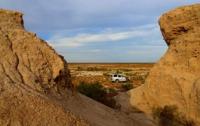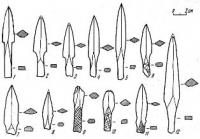You are here
Ancient settlements of Jety-asar.



Monuments of archeology of Kazakhstan.
“We remember that
equal to everyone,
there is a lot of it in human history -
for good deeds and correct conversations.
They lit a fire and taught
keep the fire andbow to the fire"
Olzhas Suleimenov "Asian bonfires".
Tours to Jety-asar.
Jetyasar (Jety-Asar, Jetyasar, Jetyasar culture) (from Kaz. Seven (many) fortresses) - a group of settlements (no less than 20) of the end of the 1st millennium BC - VIII century AD, located in the Karmakchinsky region Kyzylorda region, 19.9 kilometers west of the village of Turmagambet, in the Zhetyasar tract, near the dry channel of the Kuandarya and Kuandarya (Kuvandarya) rivers (Eskidaryalyk dry channel system).
The main part of the settlements is located in a strip 45 - 90 kilometers south of the modern city of Baikonur and the village of Dzhusaly in the Kyzylorda region of Kazakhstan. The most significant fortresses are Altyn-Asar (occupying 17 hectares), Kuraily-Asar, Kara-Asar, Bazar-Asar, Tompak-Asar, Zhalpak-Asar.
The height of the settlements above the surrounding plain is from two to ten meters. The fortified settlements were surrounded by burial grounds, in which burials were made in brick crypts, pits, pits with niches, pits with lining.
There are also catacombs. Among the finds are brooches, a belt set, mirrors, amber and glass beads, anthropo- and zoomorphic figurines and moldings on ceramics, gold jewelry, carved Iranian gems (seal stones), Chinese, Indian and other imports.
All settlements of the Jetyasar culture are well fortified, necessarily confined to the ancient channel, they are based on one or several two or three-storey fortresses, which apparently served as communal houses.
The population was engaged in irrigation agriculture, cattle breeding and fishing; an important caravan route from the Tien Shan to the mouth of the Volga passed through the area of fortified settlements. The Jetyasar culture is associated by some archaeologists with the culture of the ancient Tochars and Hephthalites, while others - with the culture of the Kanguy tribes.
The monuments were first investigated by the Khorezm archaeological and ethnographic expedition of the USSR Academy of Sciences under the leadership of S.P. Tolstov in 1946 - 1951. Research continued in 1973 - 1993 under the leadership of L.M. Levina.
The most significant excavations of the Altynasar settlement and adjacent necropolises were carried out in the second half of the 1980s - early 1990s as security work during the construction of a water conduit connecting artesian water sources in Kyzylkum with the town of Leninsk (modern Baikonur).
According to the layout, they are divided into 3 types: fortified estates, fortresses without internal residential buildings, fortresses with residential buildings inside. The most significant fortress is Altyn-Asar, with a spiral layout of a large communal dwelling house.
Main occupations of the population living in a nation-wide system, there were agriculture with primitive irrigation, cattle breeding and fishing.
Geographic coordinates of the settlements of the Dzhetyasar culture: N45 ° 06'35.37 "E63 ° 38'38.85"
Authority:
Akishev K.A., Baypakov K.M. "Questions of archeology of Kazakhstan", Alma-Ata, 1979. Tolstov S. P., "On the ancient deltas of the Oks and Yaksart", M., 1962.
Photos by
Alexander Petrov.







